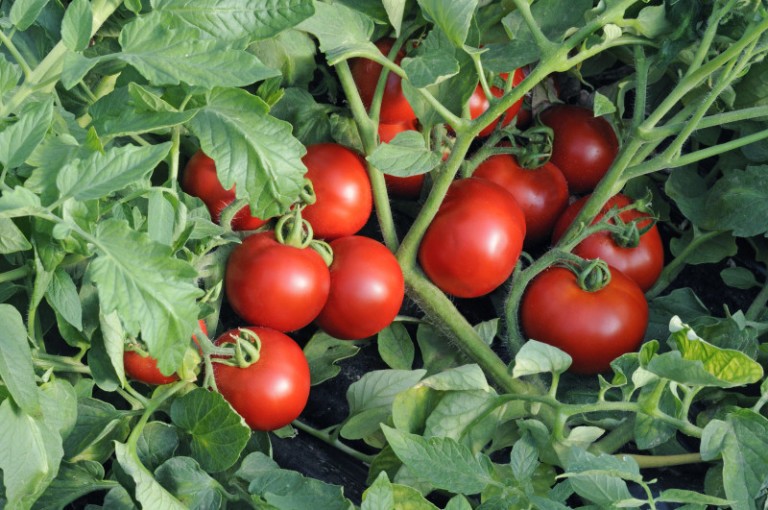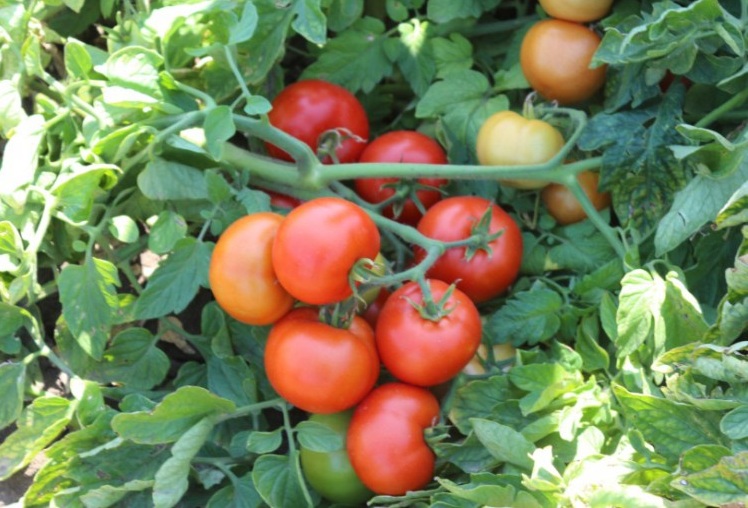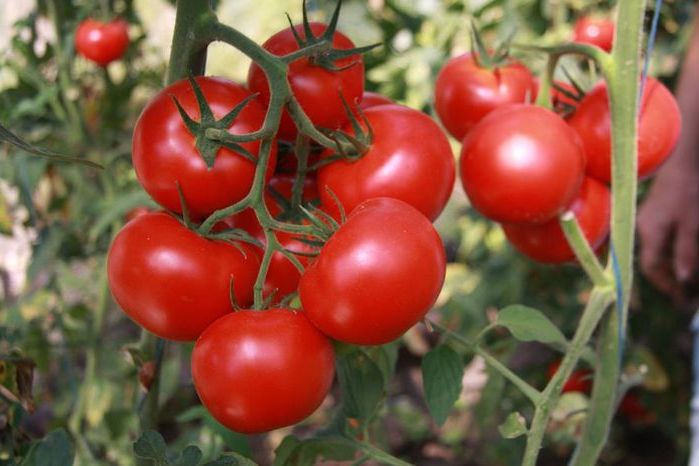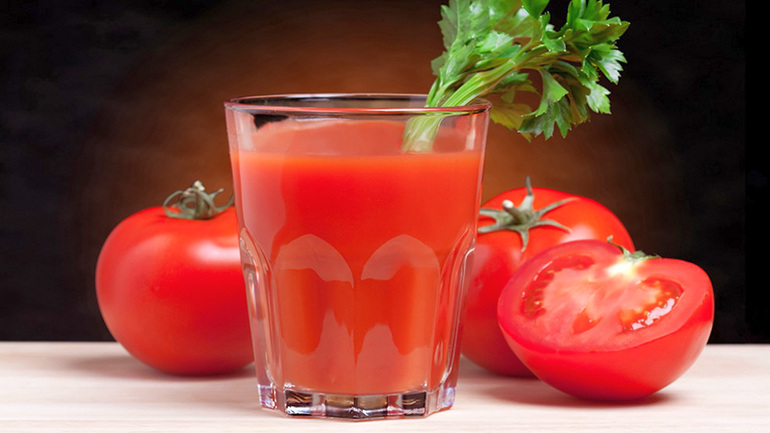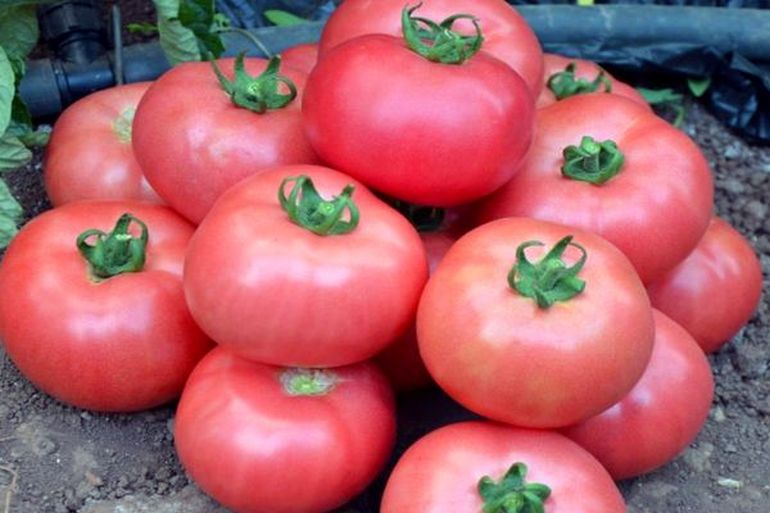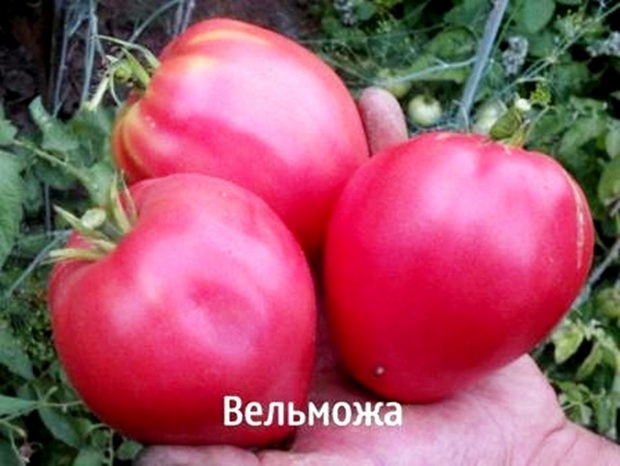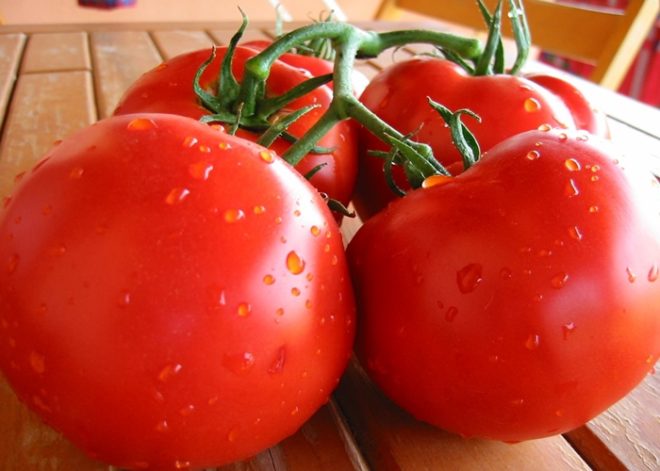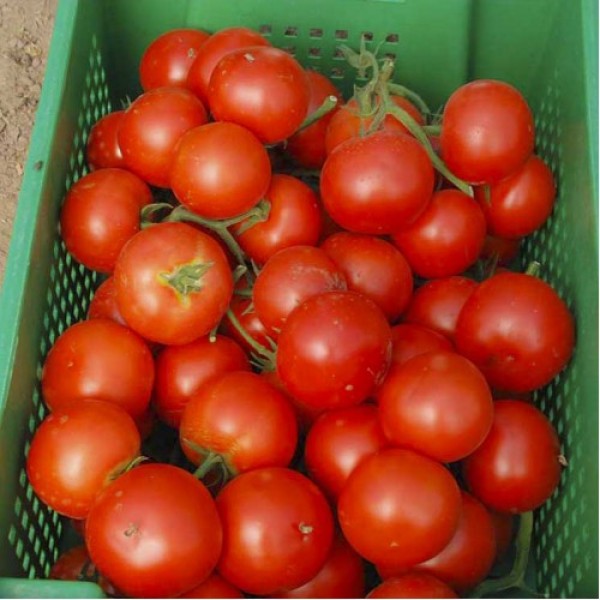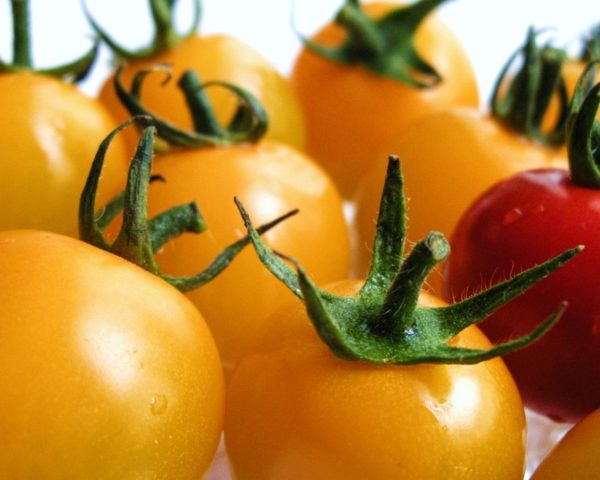Content:
The early-ripening tomato variety Katya has proven itself well among Russian gardeners. Even novice gardeners can plant tomatoes, since the plant does not require special care when growing. The article discusses the description of the variety, characteristics, how to plant a tomato Katya, the rules of agricultural technology, plant care, advantages and disadvantages.
The history of the creation of the variety
Tomato Katya is a hybrid that has the best qualities of different varieties. Tomatoes of this type are considered resistant to many diseases. The tomato cultivar Ekaterina was bred by Russian breeders Yu.B. Alekseev and S.V. Balabanyuk. The patent holder is the Semko-Yunkor company. It was entered into the Russian Register in 2007 as a tomato for planting in open ground, zoning - the North Caucasus.
The letter F1 is indicated on the package, which means that the variety belongs to the first generation hybrid.
Description of the variety
Gardeners, growing tomatoes at their summer cottage, set a goal to get a large harvest of delicious tomatoes. When choosing a variety, gardeners pay special attention to the ripening period of tomatoes.
Katya pink tomatoes are suitable for growing outdoors or in a greenhouse.
Characteristics and description of the tomato variety Katya F1:
- The variety belongs to the ultra-early, mature tomatoes can be harvested from bushes 11-12 weeks after planting the seeds;
- The variety is resistant to many diseases that affect tomatoes (tobacco mosaic, apical rot, Alternaria, late blight);
- Tomatoes are unpretentious to weather conditions;
- The bushes are determinate, tall, reaching a height of 0.5 m. If the variety is grown in a greenhouse, then the height can be 1-1.3 m;
- A lot of dark green leaves grow on the bush;
- Bushes form 1-3 stems. During the season, as it grows, the branches must be tied to a support and pinned;
- The inflorescence is simple, the first flower appears above 5 true leaves;
- On one cluster, an average of 5-8 fruits are formed, the mass of one tomato is 100-130 g;
- From a bush, you can get 8-10 kg of tomatoes grown in the open field, 12-14 kg - when grown in a greenhouse;
- According to the description of Katya tomatoes: the shape of the fruit is round, slightly flattened, elastic in structure, juicy flesh;
- Ripe tomatoes are deep red in color, uniform color, there is no green speck at the place of the stalk;
- The tomatoes taste sugary, tasty, and slightly sour. Sugar content - 2.9%, dry matter - 4.8%;
- When ripe, the fruit does not crack, it is well stored, transported, keeping quality - 90%;
- Fruits can ripen outside the bush, while taste is not lost;
- Tomatoes are consumed fresh, for making salads, for pickling. Ripe fruits can be used to make delicious tomato juice or paste.
Growing rules
Tomatoes Katya and Pink Katya are planted in open ground with ready-made seedlings. If seeds for seedlings are sown in the last week of March, then ripe tomatoes can be harvested at the end of June.
How to get seedlings from seeds:
- Purchased seeds must be disinfected in a solution of hydrogen peroxide or potassium permanganate. Then they are washed in clean water and laid out on a damp cloth;
- While the seeds are germinating, you need to prepare the soil.You can buy soil mixture at the store or make your own. Treat the soil with a solution of potassium permanganate before planting. The water must be boiling. From above the container is covered with a film so that the earth is well steamed;
- In a few days, the first seedlings should appear in the form of thin translucent filamentous processes. At this time, the germinated seeds are buried 1 cm with tweezers into a prepared container with soil. The ground in the container should be at room temperature;
- After the seedlings are moistened with a spray bottle, so as not to wash out the seeds. The box is covered with polyethylene on top and removed to a sunny place (window sill, table);
- After the appearance of several shoots, the film must be removed. The optimum temperature is 16 degrees;
- You can dive seedlings into separate pots after 2-3 true leaves appear.
Seedling care rules
To grow chunky tomatoes, seedlings need to be well looked after. The rules for caring for Katya's tomatoes are simple, even beginners can handle them:
- Water the seedlings with water at room temperature, it is advisable to harvest it in the evening, so that it has time to settle;
- Avoid stagnant water;
- Seedlings should be fed with a solution with the addition of wood ash;
- With a lack of sunlight, the tomatoes will begin to stretch upward and the stem will be weak. To prevent this from happening, it is necessary to make additional artificial lighting;
- When the seedlings are ready for planting on the site, then they must be hardened for 10-14 days. To do this, the seedlings are taken out of the greenhouse to the street, gradually increasing the number of hours; in the condition of a city apartment, a balcony, loggia or airing by opening windows are suitable for hardening.
Soil requirements
In order to grow a good crop, the soil must be fertile, light, loose, and breathable. For Katya tomatoes, loamy or sandy loam soil is suitable.
To independently determine the composition of the soil, you need to drip in a little soil, pick it up and wet it with water, you should get a dense slurry. Roll the earth into a sausage and make a half ring out of it. If the soil at the place of the fold is cracked, then the soil is loamy, if not, then the type of soil is clayey. Both types of soil are suitable for Katya tomato, but they must be properly nourished.
If the soil is with a high level of acidity, then lime or dolomite flour is added to it (for 1 sq. M 300-500 g of powder). Rotten manure and river sand must be added to heavy clay soils.
It is recommended to prepare the site in the fall. The land is cleared of weeds, roots, dug up and fertilizer is added to the soil. By the spring, it will remain to dig up and loosen the soil again.
Planting seedlings in open ground
Tomatoes of the Katya variety are considered a heat-loving and light-loving culture. The Katya variety is ultra-early, so the landing on the site must be planned, depending on the weather conditions.
The temperature regime is set in mid-May, so you can plant seedlings in the garden in mid-May or early June.
Instructions for planting seedlings on the site:
- Dig up a garden bed for tomatoes, apply fertilizer, loosen, make holes for the roots of seedlings;
- Water each hole;
- The seedlings are moistened so that they can be easily removed from the pots. If the dive was in plastic cups, then you can cut them and pull out the tomato along with a lump of earth;
- Tear off the lower leaves, place the seedling in the hole to the middle of the stem. It is necessary to deepen the seedlings more than when diving, since the stem will still stretch upward;
- Sprinkle the empty space with earth, tamp the root space a little;
- Water the planted seedlings.
Care rules
To grow Katya's tomato, you will need to perform several standard agricultural techniques:
- Watering. Katya's tomatoes are watered as needed.Water should not be allowed to stand in the garden for a long time. For each tomato root, 0.7-1 liters of water is required. A good time for watering is morning or evening, when the sun is not active. Water should not get on fruits and tops;
- Loosening, hilling. After each watering, it is advisable to loosen and huddle the wells for better aeration of the soil. Good air permeability is important for root development and active growth of tomatoes;
- Removal of weeds. Weed grass takes nutrients from the soil that are necessary for the normal development of the plant, so the site must be weeded regularly by hand, the grass must be removed from the root;
- Stepson and garter. The bushes grow tall, therefore, so that they do not break from the wind or under the weight of the fruit, they must be tied to a support. Passing is carried out for the correct formation of the bush;
- Mulching. After watering and loosening, the soil is mulched to keep the soil moist. Mulch inhibits the growth of weeds;
- Top dressing. The first fertilization is carried out 10 days after planting. For this, mineral and organic fertilizers are used. Add 5 liters of mullein and 20 g of superphosphate to 10 liters of water. You can fertilize the soil in the same way as for ordinary tomatoes.
Advantages and disadvantages of the variety
The popularity of the variety indicates the presence of a large number of positive qualities and characteristics of Katya tomatoes. Experienced gardeners who have grown the Katenka tomato variety note:
- Early ripening of tomatoes;
- Unpretentious care;
- High productivity;
- Same size and color of ripe tomatoes;
- Taste qualities of tomatoes;
- They keep their presentation well;
- Resistance to major diseases, tomatoes are not additionally treated with chemicals, the fruits are environmentally friendly;
- Ripening of tomatoes occurs almost at the same time, the entire crop can be harvested at once;
- High percentage of keeping quality, transportability;
- The fruits do not crack when ripe.
Among the disadvantages are:
- Katya's tomatoes need a garter to the support. Even sturdy stems can break under the weight of the growing fruit;
- Tomatoes are often affected by phomosis or mosaics. For treatment, copper-containing solutions or potassium permanganate solution are used;
- It is not possible to collect seed on your own. The seeds of ripe tomatoes do not retain their maternal qualities, so the seeds must be bought every time in the store.
Katya's tomato is easy to grow, the gardener, without much effort, receives a large harvest of delicious red tomatoes as a reward, which can be used both fresh and for harvesting for the winter. Simple agrotechnical manipulations, positive characteristics of the variety made it popular among Russians.
